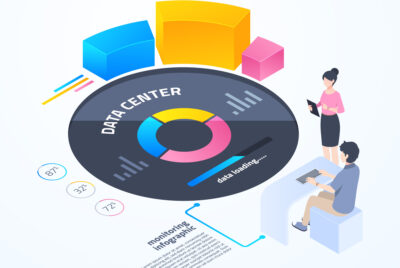Graphic design and UI/UX (User Interface/User Experience) are integral components of creating compelling digital content. Tools like Adobe InDesign, Photoshop, Illustrator, Premiere Pro, and Figma play crucial roles in shaping and enhancing visual and interactive experiences. This article delves into how these tools empower content creation and elevate design standards across various platforms.
Graphic Design and UI/UX: The Basics
Graphic Design: Graphic design encompasses the visual communication of ideas and information. It involves creating visuals that are aesthetically pleasing, functional, and aligned with brand identity.
UI/UX Design: UI (User Interface) focuses on the look and feel of a digital product, ensuring it is intuitive and visually appealing. UX (User Experience) emphasizes the overall experience of using the product, focusing on usability, accessibility, and user satisfaction.
Adobe Creative Suite: Powering Creativity
1. Adobe InDesign:
- Publication Design: InDesign is ideal for designing layouts for print and digital publications such as magazines, brochures, eBooks, and PDFs.
- Typography: It offers robust tools for typography, allowing designers to create engaging and readable text layouts.
- Integration: Seamless integration with other Adobe tools like Photoshop and Illustrator facilitates efficient workflow and design consistency.
2. Adobe Photoshop:
- Image Editing: Photoshop is renowned for its capabilities in photo editing, retouching, and manipulation.
- Graphic Design: It’s used for creating graphics for websites, social media, advertisements, and more.
- Visual Effects: Advanced features for adding effects, filters, and overlays enhance visual appeal and storytelling.
3. Adobe Illustrator:
- Vector Graphics: Illustrator excels in creating scalable vector graphics suitable for logos, icons, illustrations, and infographics.
- Precision Tools: Powerful drawing tools enable precise artwork creation, ensuring high-quality outputs for both print and digital media.
- Integration with Other Tools: Seamless integration with Adobe Creative Suite enhances cross-functional design capabilities.
4. Adobe Premiere Pro:
- Video Editing: Premiere Pro is a leading video editing software for creating professional-quality videos.
- Motion Graphics: It supports motion graphics creation and integrates seamlessly with After Effects for advanced visual effects.
- Timeline Editing: Robust timeline editing capabilities facilitate efficient video production and editing workflows.
Figma: Streamlining Design Collaboration
1. Collaborative Design: Figma is a cloud-based design tool that enables real-time collaboration among team members, regardless of their location.
- Prototyping: It allows designers to create interactive prototypes and user flows, facilitating UX design and testing.
- Design Systems: Figma supports the creation and maintenance of design systems, ensuring consistency across designs and projects.
- Version Control: Built-in version control and history tracking streamline design iteration and feedback processes.
How These Tools Enhance Content Creation
1. Efficiency and Productivity:
- Adobe Creative Suite tools streamline design workflows, enabling designers to work efficiently and meet deadlines.
- Figma’s collaborative features enhance team productivity by facilitating seamless communication and feedback.
2. Creativity and Innovation:
- Advanced features in Adobe tools empower designers to unleash creativity and explore innovative design solutions.
- Figma’s prototyping capabilities support iterative design processes, allowing for rapid experimentation and refinement.
3. Professional Output:
- The precision and versatility of Adobe tools ensure high-quality, professional-grade design outputs across various mediums.
- Figma’s design systems promote consistency and coherence in design elements, enhancing the overall user experience.
Conclusion
Graphic design, UI/UX, and tools like Adobe Creative Suite and Figma are indispensable for creating visually appealing, user-friendly digital content. Whether designing layouts, editing photos and videos, creating illustrations, or prototyping interfaces, these tools empower designers to elevate their craft and deliver impactful experiences. By leveraging their capabilities in efficiency, creativity, collaboration, and professional output, designers can effectively meet the demands of today’s digital landscape and exceed user expectations. Embracing these tools not only enhances content creation processes but also drives innovation and sets new standards in design excellence.



